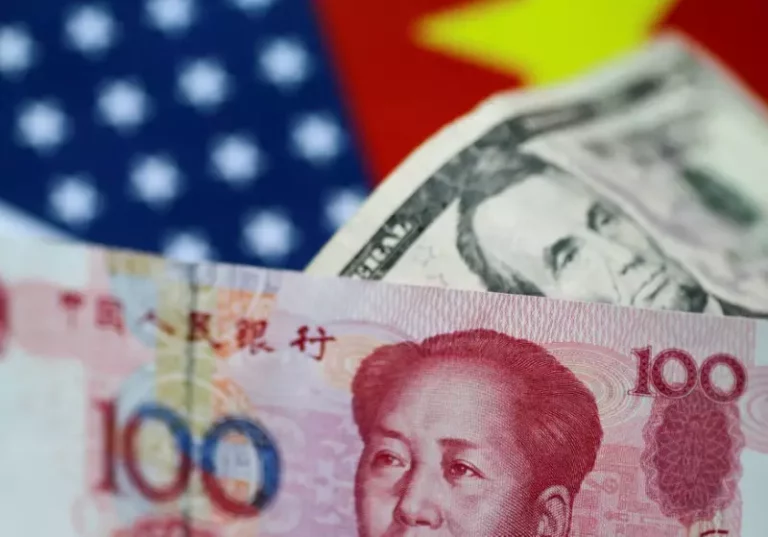Market Reactions to Anticipated U.S. Policy Changes and Global Economic Trends

The U.S. dollar has recently demonstrated remarkable strength, reaching a four-month high against a basket of major currencies. As of Tuesday, the dollar index, which captures the currency’s performance against six others, climbed by 0.38%, settling at 105.83—its highest point since early July. This bullish trend corresponds closely with the anticipation surrounding the incoming administration of Donald Trump, whose policies are expected to prioritize monetary and fiscal initiatives favoring the dollar.
Concurrently, the cryptocurrency landscape is witnessing electrifying developments. Bitcoin, the world’s leading digital currency, has seen its value soar to unprecedented heights, peaking at $89,982 before slightly retracting to around $87,330. This surge is attributed to speculation that the Trump administration will foster a more crypto-friendly regulatory environment. According to Gautam Chhugani from Bernstein, the inspiration behind this enthusiasm stems from expectations of a supportive stance from agencies like the Securities and Exchange Commission (SEC) under Trump’s leadership.
Amid the dollar’s triumph, the euro has found itself in a precarious position, sinking to its lowest levels in seven months. Reports indicate that it traded at $1.0611 on Tuesday, reflecting a decline attributed to various internal uncertainties and external pressures, including a projected aggressive trade stance from the U.S. government. Further complicating matters, the Chinese yuan has also faced declines, finishing at 7.2378 against the dollar—its weakest close in over three months. The Aussie dollar, heavily influenced by China’s economic health—Australia’s largest trading partner—similarly faltered by falling 0.45%. These currency trends illustrate a global market grappling with the impact of shifting U.S. policies and trade relations.
The political landscape in the U.S. is pivotal in shaping investor sentiment. With Trump’s Republican Party poised to maintain control of both houses of Congress, expectations surge regarding fiscal strategies that could include tax cuts and government downsizing. These anticipated changes naturally incline investors toward a strengthening dollar and potentially rising stock markets. Additionally, Trump’s appointing choices, such as the hawkish Senator Marco Rubio for Secretary of State and China critic Representative Mike Waltz for national security adviser, signal a determined approach to foreign policy, particularly involving China. Such developments affect market perceptions, catalyzing strategic shifts in investment.
Analysts indicate that Trump’s hardline policies could have powerful repercussions globally, specifically regarding trade. With the U.S. administration hinting at imposing tariffs on European and Chinese imports, the likelihood of retaliatory measures creates uncertainty and volatility across financial markets. This scenario leaves investors wary, leading to adjustments in expectations, particularly concerning U.S. Federal Reserve interest rates.
As discussions around tariffs and immigration policies rise, market projections regarding U.S. interest rates are also being recalibrated. Expectations for a potential quarter-point rate cut by the Federal Reserve in December have diminished dramatically, dropping from nearly 80% a week prior to around 69%. The ramifications of these changes stretch far beyond the borders of the United States; they affect global economic dynamics and financial strategies.
Moreover, Europe is contending with its own political instability, particularly in Germany, where upcoming elections are set against the backdrop of a fragile coalition government. With Chancellor Olaf Scholz’s coalition recently collapsing, uncertainties surrounding new leadership and economic policies further exacerbate the euro’s vulnerability.
The current economic climate is characterized by heightened volatility driven by anticipated changes in U.S. policy, coupled with local and global economic challenges. As investors respond to the strengthening dollar and the exhilarating rise in cryptocurrency valuations, they remain acutely aware of the underlying risks associated with trade proposals and political uncertainty. The unfolding scenario demands vigilance from market players as they navigate these turbulent waters, hoping to align their strategies with the shifting tides of international finance.





